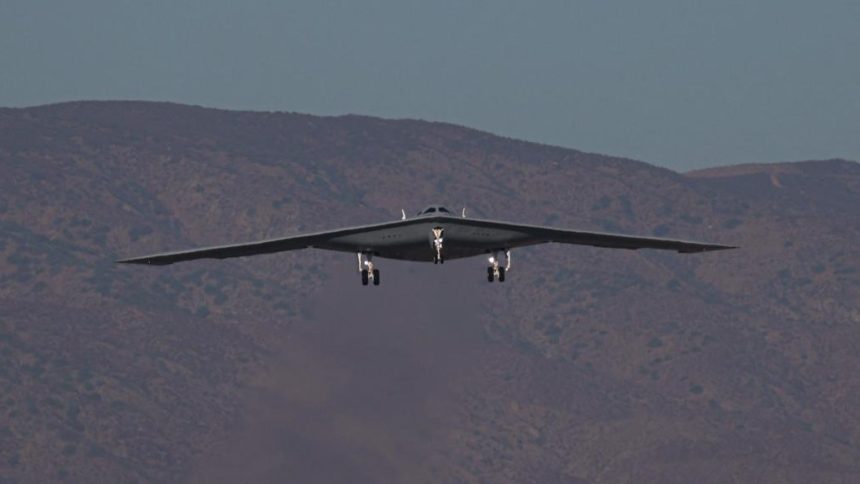The second B-21 Raider, the newest stealth bomber from Northrop Grumman, took to the skies at 8 a.m. on September 11. Its flight was accompanied by a vigilant F-16 fighter jet, which stayed close like a protective bodyguard. This flight marked a significant step forward for the program, moving beyond basic wing and engine checks to testing weapons systems and refining advanced technologies designed to let the B-21 Raider operate undetected.
Historic First Flight of the Second B-21 Raider
After a flawless landing at Edwards Air Force Base, the B-21 Raider taxied to a stop in front of a team of 912th Maintenance Squadron airmen. They rushed forward to secure the aircraft, marking a smooth and successful first mission. To ensure safety and collect critical data on low-speed performance, the landing gear remained down for most of the flight. Now parked alongside its twin, Cerberus, which has been flying twice a week since last year, the two aircraft form the foundation of a growing B-21 Raider test fleet, signaling a transition from prototypes to operational machines.
The presence of two B-21 Raiders allows the Air Force to split tasks during testing. Cerberus continues to demonstrate fundamental flight capabilities, such as navigating turbulence, executing tight turns, and extending wings safely. Meanwhile, the new B-21 Raider is tackling more complex missions, including testing its internal systems and weapons configurations.
China’s Veiled Warning to US; WZ-9 Drone Could Detect F-35 and B-21
Advancing Weapons and Systems Testing on the B-21 Raider
Northrop Grumman officials explained that the second B-21 Raider will feature a cleaner setup for weapons testing, unlike the probe-and-cone configuration used in the first flight. Soon, the aircraft will carry a mock payload including the AGM-181 Long-Range Stand-Off cruise missile, the B61 nuclear gravity bomb, and the initial models of a large penetrator warhead. This weapon specially destroys heavily reinforced underground bunkers, showcasing the B-21 Raider’s versatile strike capabilities.
The B-21 Raider’s design emphasizes stealth features. It is slightly smaller than the older B-2 Spirit, with a wingspan of 132 feet, and engineers shaped every curve to reduce radar detection. Designers limited the flat areas on its belly to the bomb bays and blanked them out to avoid airflow disruptions. Two Pratt & Whitney PW9000 turbofan engines provide power, optimized for quiet and efficient flight rather than speed. The aircraft can carry up to 20,000 pounds of payload at speeds approaching Mach 0.8 and can reach global targets without mid-air refueling. Experts expect its range to exceed the B-2’s 6,000 nautical miles, allowing it to complete long-duration missions.
Cutting-Edge Technology and Autonomous Capabilities
One of the most advanced aspects of the B-21 Raider is its use of artificial intelligence-infused flight computers. These systems allow the aircraft to operate with or without a pilot, depending on mission requirements. Missions can be pre-programmed, letting the B-21 Raider fly solo in situations where precision is more critical than endurance. Over-the-air software updates maintain the aircraft’s sensors and weapons at peak performance against evolving defense systems.
Australia’s Strategic Move: Considering the B-21 Stealth Bomber
Northrop Grumman has conducted extensive ground testing using additional B-21 airframes that do not fly. These “non-flyers” undergo simulated lifetimes of takeoffs, landings, and combat operations to stress-test components and systems. The results consistently exceed expectations, reinforcing confidence in the B-21 Raider’s readiness and reliability. The aircraft is designed not only as a technological marvel but also as a workhorse, capable of carrying out demanding missions when older bombers are retired.
The successful flight of the second B-21 Raider underscores the steady progress in the United States’ next-generation bomber program. With its combination of stealth, speed, payload capacity, and autonomous capabilities, the B-21 is solidifying its role as a cornerstone of modern airpower, and each test brings it closer to fully operational status.

